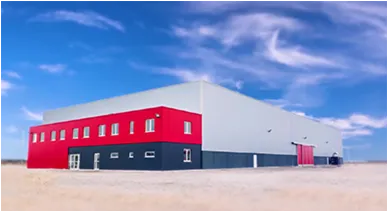- Afrikaans
- Albanian
- Amharic
- Arabic
- Armenian
- Azerbaijani
- Basque
- Belarusian
- Bengali
- Bosnian
- Bulgarian
- Catalan
- Cebuano
- Corsican
- Croatian
- Czech
- Danish
- Dutch
- English
- Esperanto
- Estonian
- Finnish
- French
- Frisian
- Galician
- Georgian
- German
- Greek
- Gujarati
- Haitian Creole
- hausa
- hawaiian
- Hebrew
- Hindi
- Miao
- Hungarian
- Icelandic
- igbo
- Indonesian
- irish
- Italian
- Japanese
- Javanese
- Kannada
- kazakh
- Khmer
- Rwandese
- Korean
- Kurdish
- Kyrgyz
- Lao
- Latin
- Latvian
- Lithuanian
- Luxembourgish
- Macedonian
- Malgashi
- Malay
- Malayalam
- Maltese
- Maori
- Marathi
- Mongolian
- Myanmar
- Nepali
- Norwegian
- Norwegian
- Occitan
- Pashto
- Persian
- Polish
- Portuguese
- Punjabi
- Romanian
- Russian
- Samoan
- Scottish Gaelic
- Serbian
- Sesotho
- Shona
- Sindhi
- Sinhala
- Slovak
- Slovenian
- Somali
- Spanish
- Sundanese
- Swahili
- Swedish
- Tagalog
- Tajik
- Tamil
- Tatar
- Telugu
- Thai
- Turkish
- Turkmen
- Ukrainian
- Urdu
- Uighur
- Uzbek
- Vietnamese
- Welsh
- Bantu
- Yiddish
- Yoruba
- Zulu
Nov . 29, 2024 15:18 Back to list
The Evolution and Significance of Metal Building Manufacture
In recent years, the construction industry has seen a significant transformation, especially when it comes to the use of metal in building manufacture. Metal buildings have become increasingly popular due to their versatility, durability, and cost-effectiveness. This article explores the evolution of metal building manufacture, its benefits, and its impact on modern construction practices.
The Origins of Metal Building Manufacture
The usage of metal in construction dates back to the late 19th century, during the Industrial Revolution. At that time, advancements in steel production, particularly with the introduction of the Bessemer process, allowed for the mass production of high-quality steel. This new material quickly made its way into bridges, skyscrapers, and various industrial applications. However, it was not until the mid-20th century that metal buildings began to emerge as a popular choice for residential, commercial, and agricultural structures.
The introduction of pre-engineered metal buildings in the 1960s marked a significant turning point in metal construction. These buildings were designed using standardized components that could be fabricated in a factory and assembled on-site. This innovative approach not only reduced construction time but also decreased labor costs, making metal buildings a highly attractive option for a variety of applications.
Advantages of Metal Buildings
The growing trend toward metal building manufacture can be attributed to several inherent advantages of metal as a building material
.1. Durability and Longevity Metal buildings are known for their strength and resilience. Unlike traditional wood structures, metal is impervious to pests such as termites and does not rot or warp over time. Properly treated metal can withstand extreme weather conditions, ensuring that the building remains structurally sound for decades.
metal building manufacture

2. Cost-Effectiveness The initial cost of metal buildings can often be lower than traditional building materials, particularly when considering the long-term savings on maintenance and energy costs. Additionally, the speed of construction associated with pre-engineered metal buildings reduces labor expenses, making them an economical choice for many projects.
3. Design Flexibility Modern metal buildings can be designed to accommodate a wide variety of uses, from warehouses and factories to residential spaces and community centers. With advancements in architectural design software, metal buildings can be customized to meet specific aesthetic and functional requirements without compromising structural integrity.
4. Sustainability In an age where environmental consciousness is paramount, metal building manufacture has a significant advantage. Steel is recyclable, and using recycled materials in construction helps to reduce waste and lower an enterprise's carbon footprint. Furthermore, metal buildings can be designed with energy-efficient features, such as insulation and reflective roofing, to reduce energy consumption.
The Future of Metal Building Manufacture
As technology continues to advance, the future of metal building manufacture looks promising. Innovations in construction techniques, such as prefabrication and modular building methods, are set to enhance the efficiency and sustainability of metal buildings further. The adoption of smart technology within buildings also allows for greater energy efficiency management and improved sustainability practices.
Moreover, as urban populations continue to rise, there will be an increasing need for efficient, cost-effective housing solutions. Metal buildings can play a vital role in addressing these challenges, offering quick and adaptable solutions to meet growing demands.
Conclusion
The evolution of metal building manufacture has significantly impacted the construction industry, providing a viable alternative to traditional building materials. With their numerous advantages, including durability, cost-effectiveness, design flexibility, and sustainability, metal buildings are well-positioned to address the demands of modern construction. As we move forward, the continued innovation in this sector will likely yield even more efficient and sustainable building practices, solidifying metal’s role as a cornerstone in the future of construction. The shift towards metal buildings not only redefines the architectural landscape but also promotes a more economical and environmentally friendly approach to creating the structures that shape our communities.
-
How Do Prefabricated Steel Structures Transform Modern Construction?
NewsJul.14,2025
-
How Do Prefabricated Metal Buildings Redefine Modern Construction?
NewsJul.14,2025
-
How Do Prefab Insulated Metal Buildings and Steel Structures Revolutionize Modern Construction?
NewsJul.14,2025
-
How Do Pre - Engineered Steel Structures Redefine Modern Construction?
NewsJul.14,2025
-
Advancing Modular Construction with Prefabricated Metal Structures
NewsJul.14,2025
-
Advancing Industrial Infrastructure with Prefabricated Steel Solutions
NewsJul.14,2025
Products categories
Our Latest News
We have a professional design team and an excellent production and construction team.












